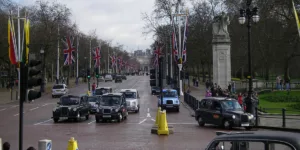Manual cars are considered a dying breed in the US. But across the pond, it’s a different story. In 2013, 75% of all cars sold in the UK have manual transmission. Fast forward to 2017 and most UK drivers still prefer manual cars.
It’s not that the local market is slow to adapt, nor is it because they have a stigma associated with driving automatic cars. Sure, you may come across some folk who’d say automatic cars are for “grannies” or lazy people. But the real culprit is the significant price discrepancy between automatic and manual cars in Europe – whether it’s used or brand new.
UK student drivers also prefer taking the driving test with a manual transmission car. In 720,000 driving tests taken, only about 40,000 involved automatic cars. This is mainly because learners can drive any type of car if they pass the manual test, otherwise they’d be restricted to driving only automatic cars.
Nevertheless, the reason why manual cars are more preferred by UK drivers is the least of your worries. If you’re planning a trip to the UK and might need to rent a car, then here are a few things you need to remember:
1. Get Used to Driving Stick Shift
The big elephant in the room is whether or not you’re used to driving a manual car. If you go to car rental sites and search for available cars in the UK, automatic cars are either twice as pricey or hard to find.
You may have passed the driving test with a manual, but if you’re more used to driving automatic cars, then jumping on a car with three pedals can be nerve-wracking.
Take note that driving a manual car is all about mastering the clutch. You may know the mechanism and how to operate it, but getting familiar with the clutch takes practice. So before your trip, call somebody who owns a manual car and ask if they can provide you with a simple practice session along with some advice.
Here are a few additional tips that can help you:
- Upon entering your rented car, practice getting to the bite point as quickly as possible.
- Don’t be afraid to use the parking brake on hills.
- Don’t let your foot rest on the pedal, even if you think you’re not applying any pressure.
- Only fully depress the clutch when shifting or coming to a complete stop.
2. Understand the UK Highway Code
Although the Highway Code in the UK is quite similar to anywhere else in the world, there are some key differences that are worth reviewing. A fundamental difference, for example, is that you can only carry alcohol as long as it’s stored in the trunk or “boot” of the car.
The road signs, on the other hand, should still be familiar to you – if not self-explanatory. But to eliminate any doubt, you can simply refer to free resources like DriverKnowledge to learn more about the Highway Code, traffic signs, and everything else you need to know when driving in the UK.
3. Visualize Shifting with your Left Hand
Another reason why it’s intimidating to drive in the UK is because it’s an LHT or left-hand traffic country. This means the driver will be sitting on the right side of the vehicle with the gear selector to their left.
Given that you’re coming from the US or any of the 163 other countries with right-hand traffic, driving on the left lane is probably the biggest adjustment you’ll have to make. But you should be able to get the hang of it after an hour of driving a left-hand drive car.
4. Verify What Vehicles You Can Drive
The type of vehicle you can drive in the UK depends on where you obtained your license and the purpose of your visit. For this, you can go to Gov.uk and use the tool to know which vehicles you can drive with your current license. In any case, it should only be valid for up to twelve months with all the restrictions applied while you’re in the UK.
Final Words
Aside from the legal side of things, driving a manual car in the UK boils down to your proficiency and level of comfort with manual transmission. It is, of course, more challenging than learning stick shift in your own country, especially due to the left-hand traffic. After familiarizing yourself with manual cars, you should start looking for spots to visit once you’re in the UK.








